‘Squid Game’ joins the list of great set designs
The phenomenal series Squid Game has received worldwide acclaim (or at the very least, notice) for the brilliance of its script, the acting and direction, the brutality of the games, and the set design.
Of the last, Squid Game has inarguably joined the pantheon of the best set designs, alongside the amazingly detailed worlds of Harry Potter, The Grand Budapest Hotel, The Great Gatsby, Westworld series, and Waterworld (no matter how bad the movie was, the production design was undeniably on point), among a few others.
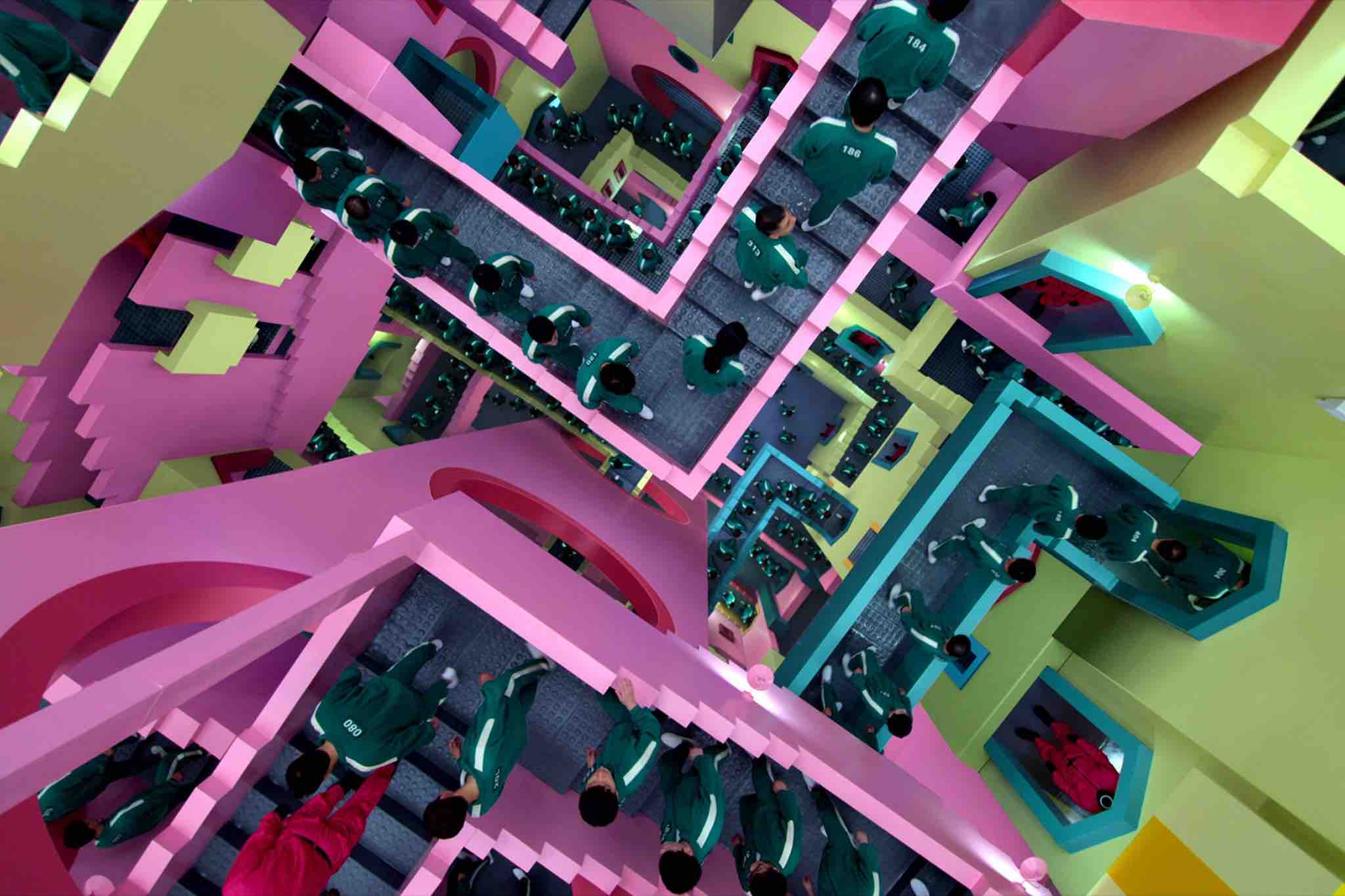
Squid Game’s set design sets up each game and character so well it heightens the nerve-wracking tension for the audience. In some scenes it pulls you into its childlike world and then rips your heart out by the end.
The Dalgona Candy game, for instance, is filmed in a playground with painted clouds on the walls, a slide and carousel . Each player cuts out a shape in the biscuit with a needle and is responsible for his own outcome—a pass or a bullet in the head in this playground (a cute one, if we may add).
Actor Lee Jung-jae (Seong Gi-hun) says in a Netflix interview on Youtube, “Whenever we moved to a different set, I’d wonder how this one would look. It made me so curious.” He also likens the sets to “modern art.”
Park Hae-soo (Cho Sang-woo) felt the same curiosity about how “these wild, imaginary spaces would be realized on set.” The sets, he adds, were a huge “stimulus” for him as an actor.
All the actors were so awed by the design that they would take pictures and selfies before they began shooting. And if you found the atmosphere stress and anxiety-inducing, you can thank Squid Game art director Chae Kyung-sun for that. She also art directed the Korean productions The Royal Tailor, Silence, The Fortress and A Melody to Remember, among many others.

You can also thank her for setting up the tone for the existentialist hopelessness you feel for the cash-strapped characters who rejoin the games knowing it would involve killings including, in all probability, their own deaths.
In the same Netflix interview, Kyung-sun says that when she got the script from Squid Game director Hwang Dong-hyuk, “it felt like reading a Grimm fairy tale.”
And when she decided to get onboard the series, her goal was to give a new interpretation to the themes of aspiration and desire.
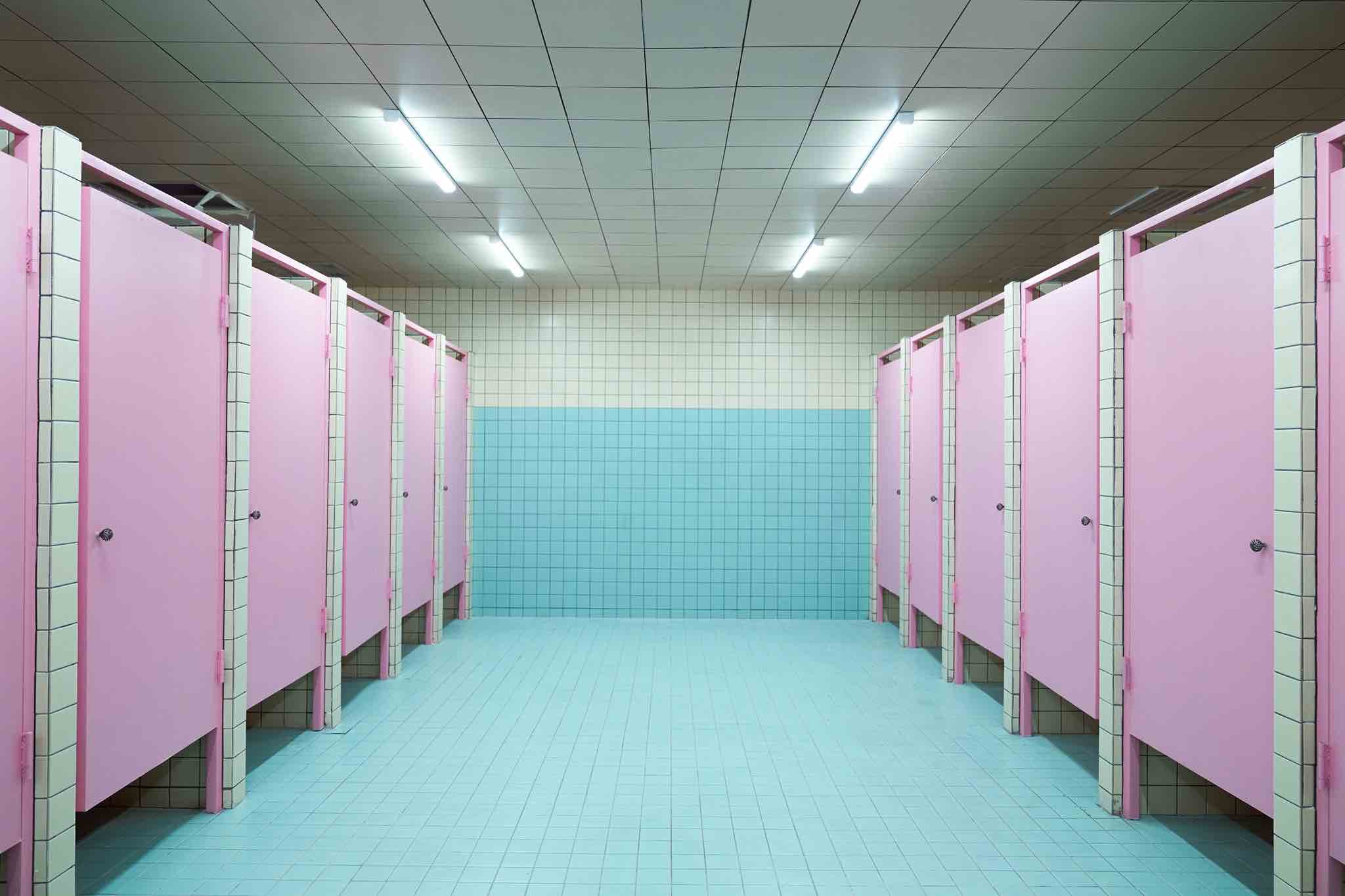
Squid Game is a loop of hellish reality—whether the players are on the island in Westworld-like isolation or in the outside world—both are one part Jean-Paul Sartre (No Exit), one part MC Escher (“Relativity”).
“When we were creating the overall spaces, we were thinking of people abandoned in the streets,” she said. “Each person was in a difficult situation, each person carrying their own baggage before coming to the stadium. I thought of them as people having nowhere to go.”
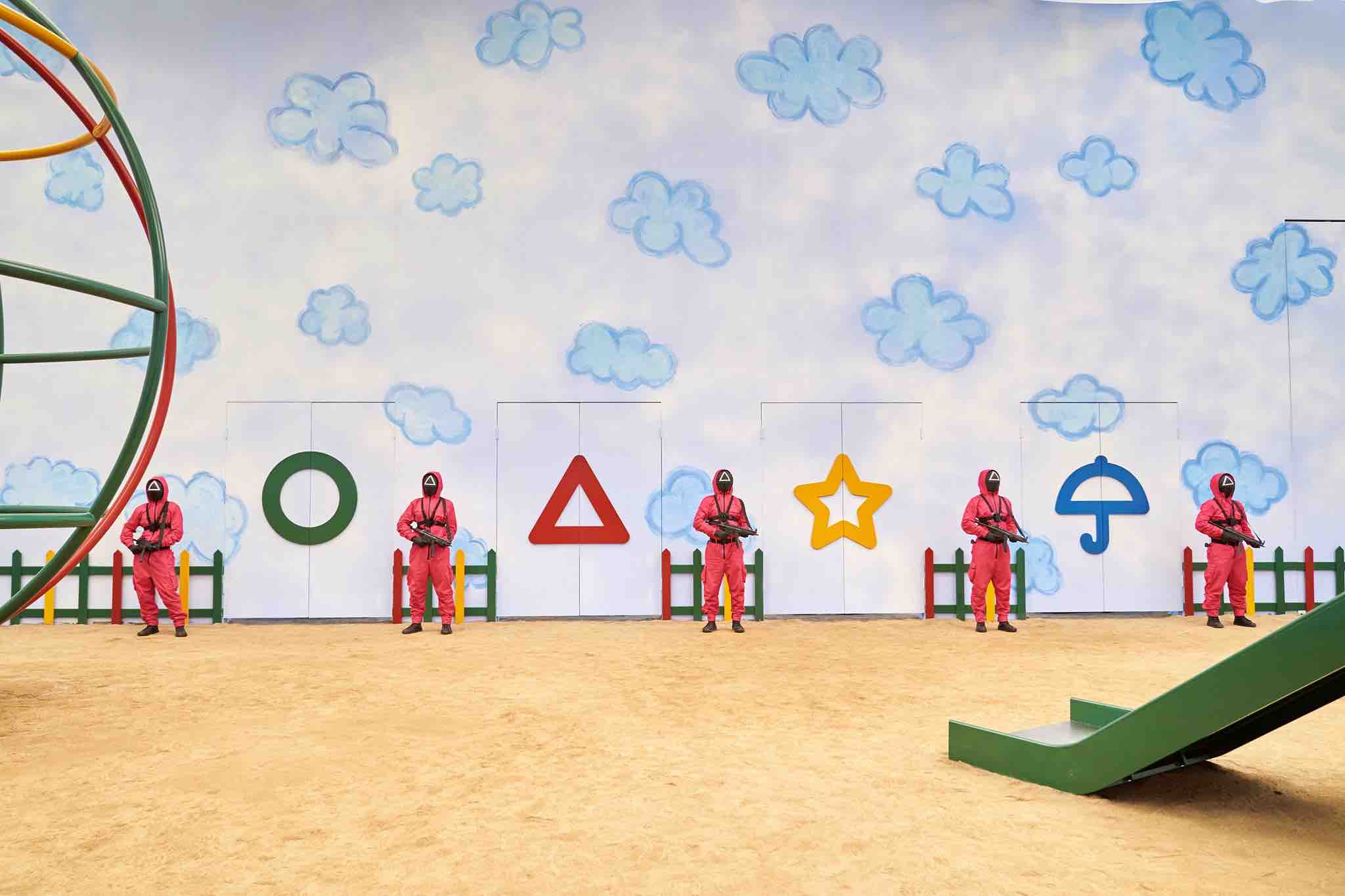
The famous staircase scene, according to director Dong-hyuk, was based on Escher’s trippy artwork that features disorienting staircases that interweave and defy gravity.
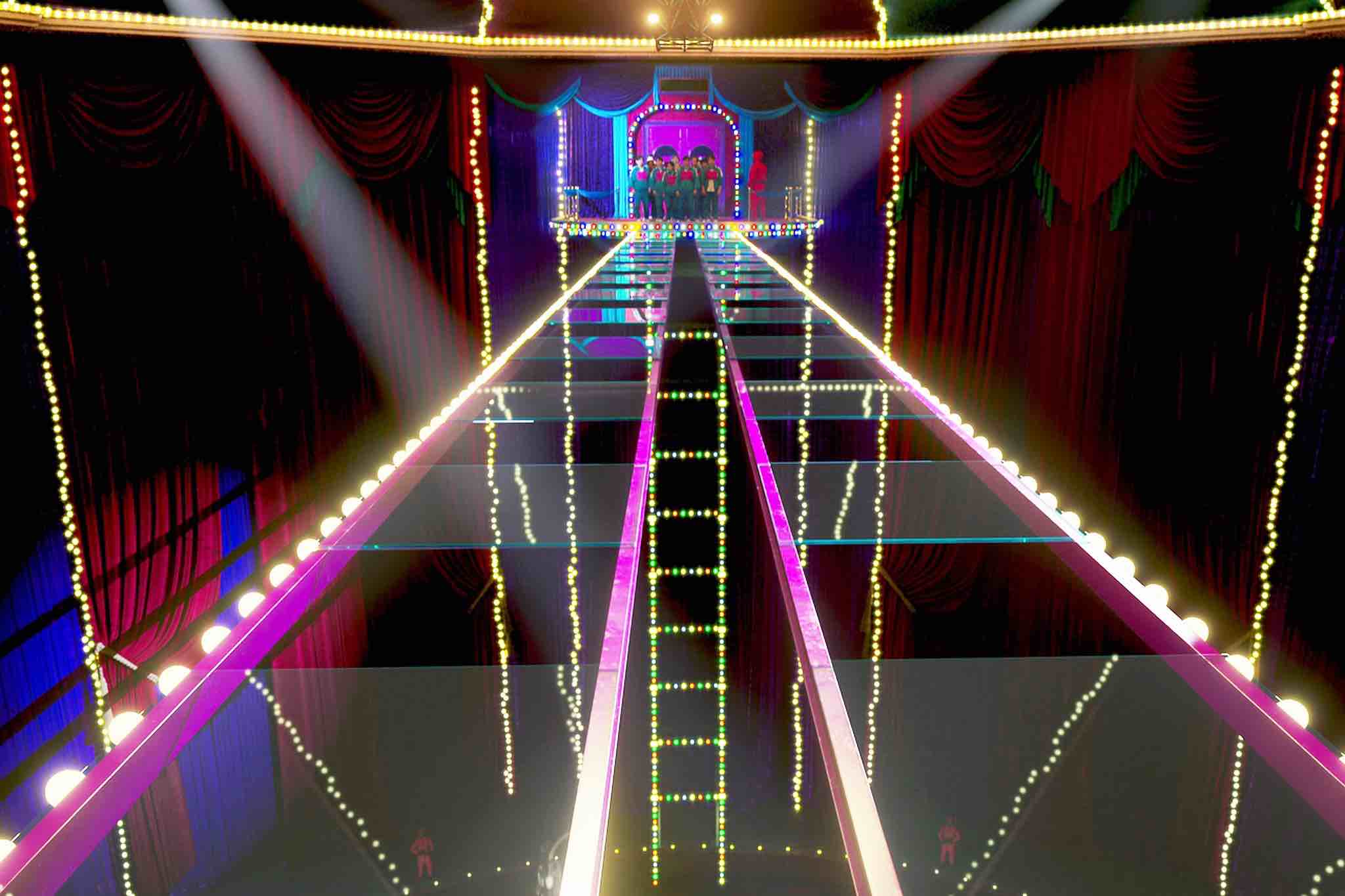
Instead of using dark and somber colors, art director Kyung-sun washes the set in pastel shades of pink, blue, green and yellow. The design is as trippy as Escher’s—but more foreboding even with or perhaps because of the innocent color palette, with blood dripping in a few places.
Originally built for hundreds of people to walk through, the scale of the stairs becomes more obvious as the games whittles down more people until there are only two.
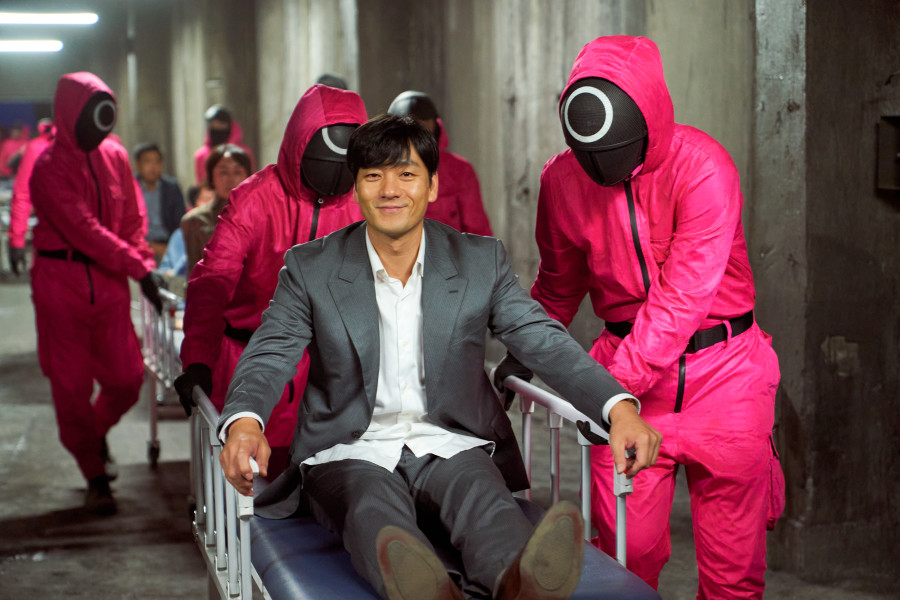
Apart from the giant doll (Red Light, Green Light), whose eyes see literally every movement of the players, this staircase scene has become the signature set of Squid Game. The slow climb of the actors leading to another game that might end their lives is akin to a prisoner walking to the noose.
“It was built like a maze, so we had to break down walls sometimes because of operational issues,” she says. “The staff was worn out at the end of the day. They had to think of where and how to install the cameras in there.”

One of the most brutal aspects post-game was the disposal of the dead players. The incinerators are a reference to Auschwitz, says Dong-hyuk.
But the gift-wrapped coffins add one more perverse element in a show already full of sadistic perversions. Designed with ribbons on top as if they were presents, Kyung-sun says she went into the mind of the creator of the games, imagining him thinking he was God. “He’d think he gave the contestants a chance as if he’s God—this is my gift to you. Even your bodies being disposed in the incinerator is a show of my mercy. So I thought, what if I put a ribbon on it?”
The penultimate game, the Glass Stepping Stones, is an acrophobic’s nightmare (as is the Tug of War). The players have to cross the bridge not knowing whether they’re stepping on tempered glass that would hold the weight of two people or an ordinary glass that would plunge them to their death.
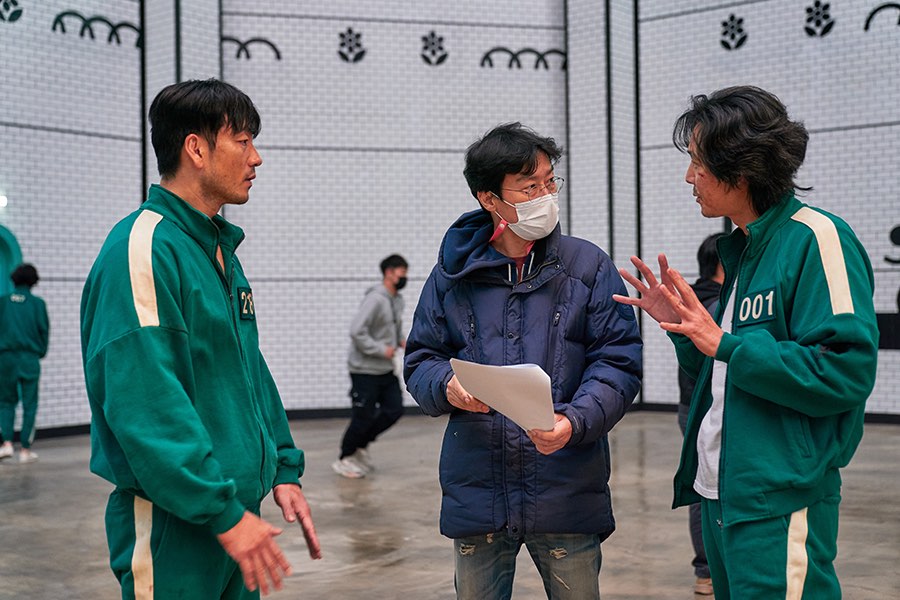
“We ran lots of tests on jumping over the bridge. I couldn’t do it,” Kyung-sun says. “Will the actors really be able to do this? I debated that. At the end, I talked to the director and decreased the gap a little and rearranged the whole thing.”
The Marbles Game takes the players to an old-fashioned Korean neighborhood. One that looks like his own, Player 001 (Il-nam) says, a clue to the game’s finale.
For this, Kyung-sun designed each house to be look differently. “I looked at the faces of people whenever they entered a new room. I was so curious. They’d say, ‘Oh, are we playing in that?’ ‘This is a real old-fashioned front gate.’ It made me feel real proud.”
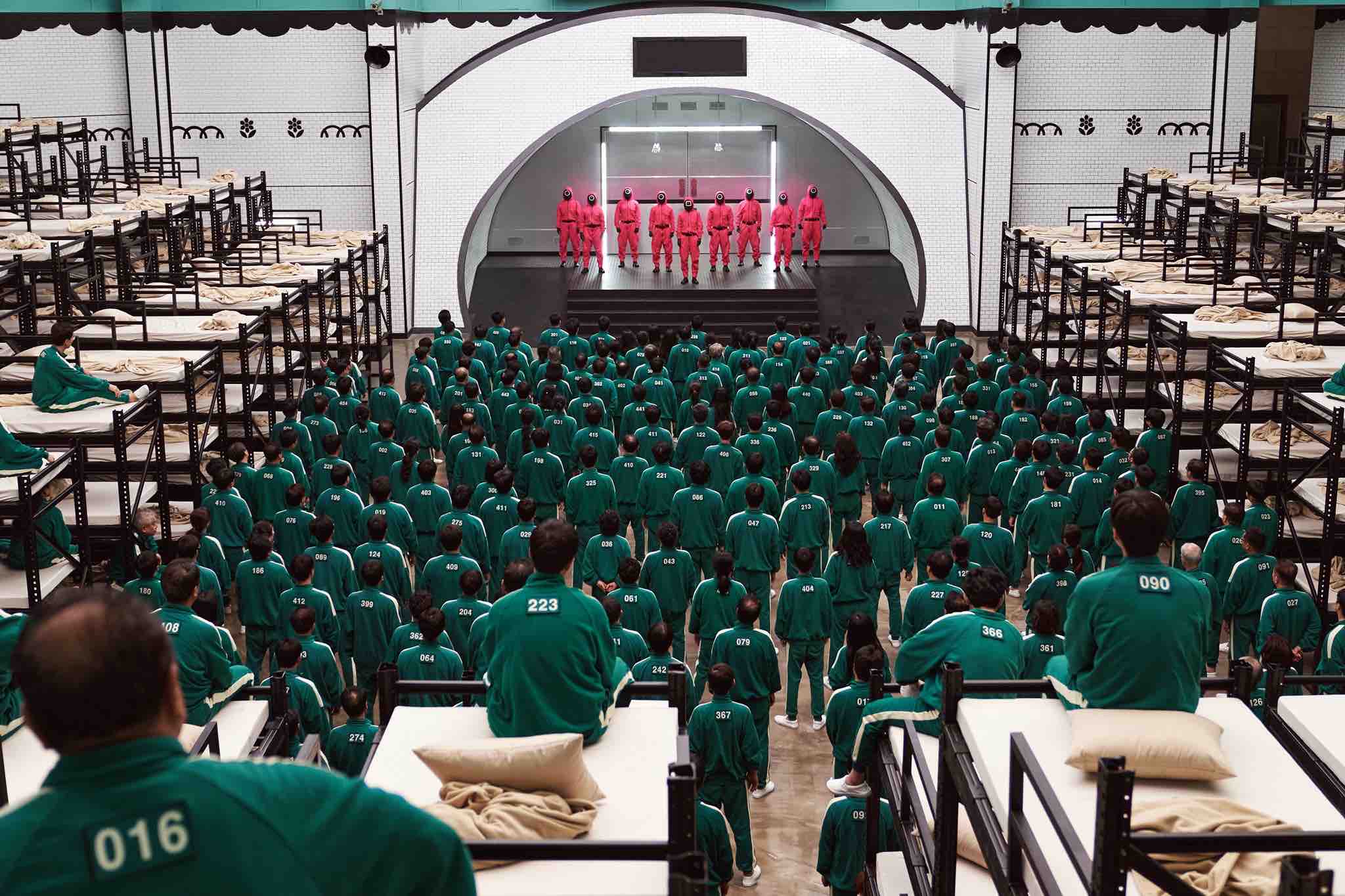
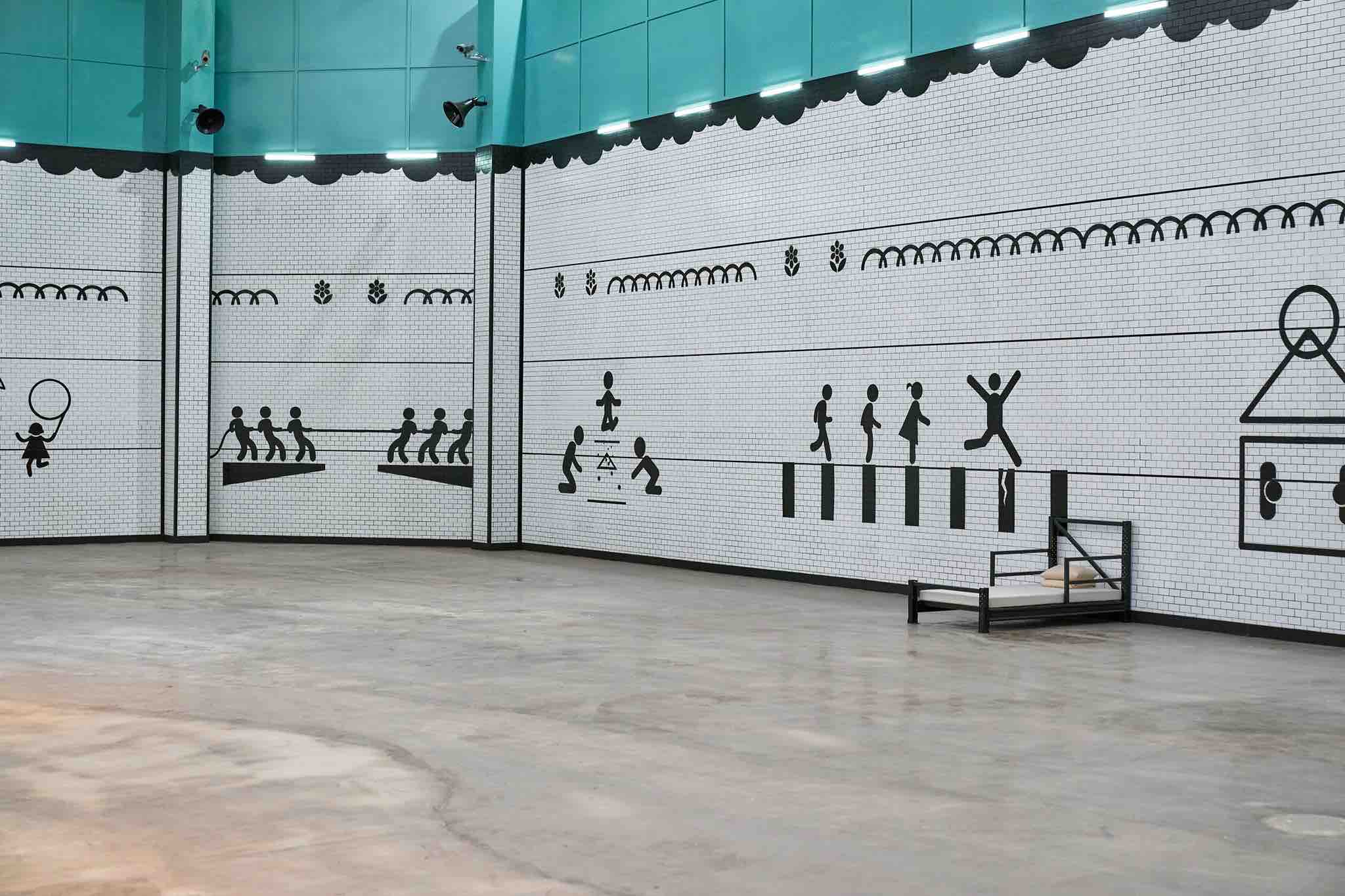
And, finally, the dormitory where the players sleep with the bunk beds serving as metaphor for modern life.
Kyung-sun says, “Since modern society is in constant competition to climb the ladder, we thought about portraying that in the bed design.”
They had countless draft proposals, “so many we could make a separate show with the rejected proposals alone,” she laughs.
The director says she proposed a warehouse store concept for the dormitory. “Rather than treating them like people, she proposed treating them like objects piled on warehouse shelves.”
Thus the ladder or pyramid form of the beds made it to the series. Behind the beds, of course, are the pictograms of the games—but the audience doesn’t see these until the number of players is whittled down and the beds pushed aside and finally disappear.
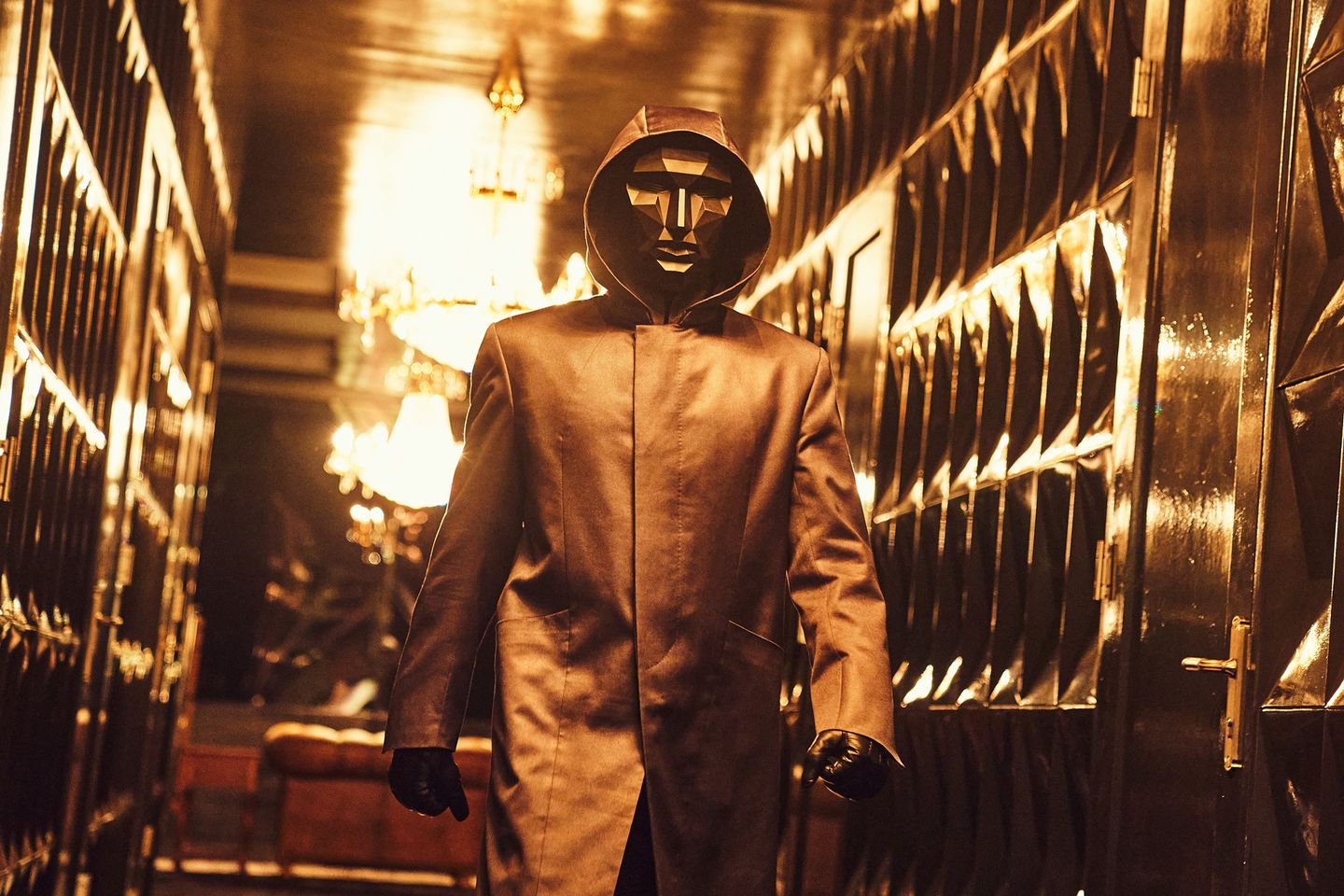
The clues were there from the beginning but it’s a slow reveal—and it’s brilliant!
The series is rife with metaphors for society, and the characters reflect the best and worst in humans trapped in situations they were born in or of their own making. For the randomly unlucky (because life is often like that), there’s no getting out like in Escher’s infinite staircases that lead to nowhere. Or in Sartre’s mysterious room trapped for eternity.



